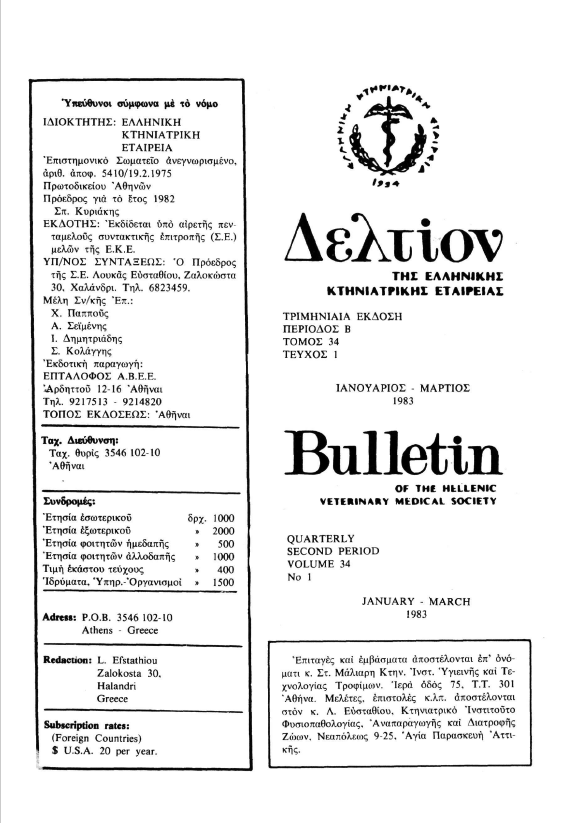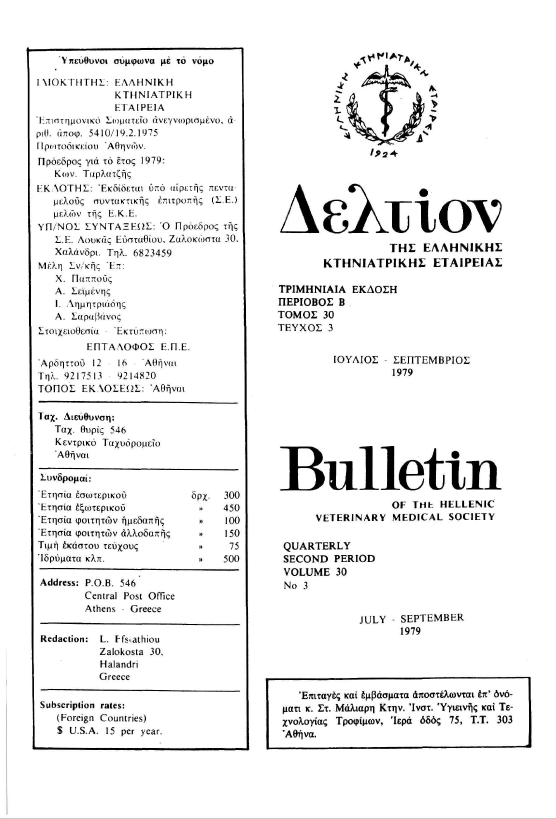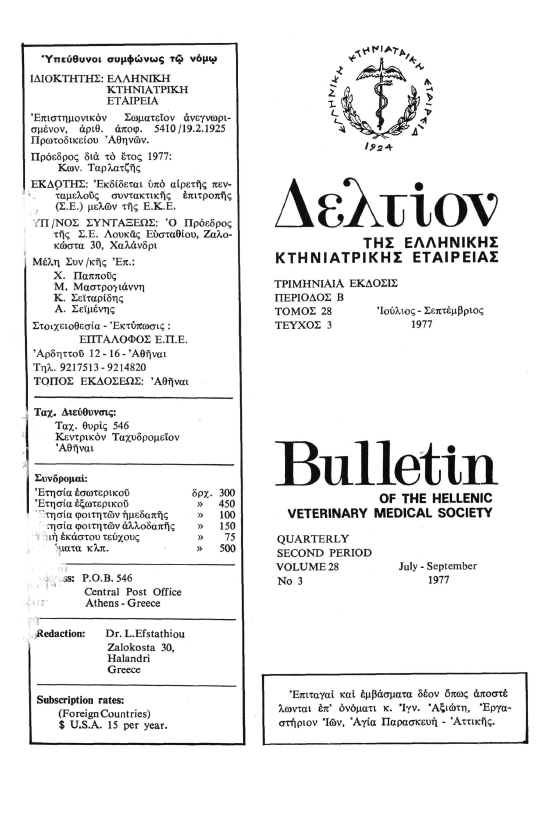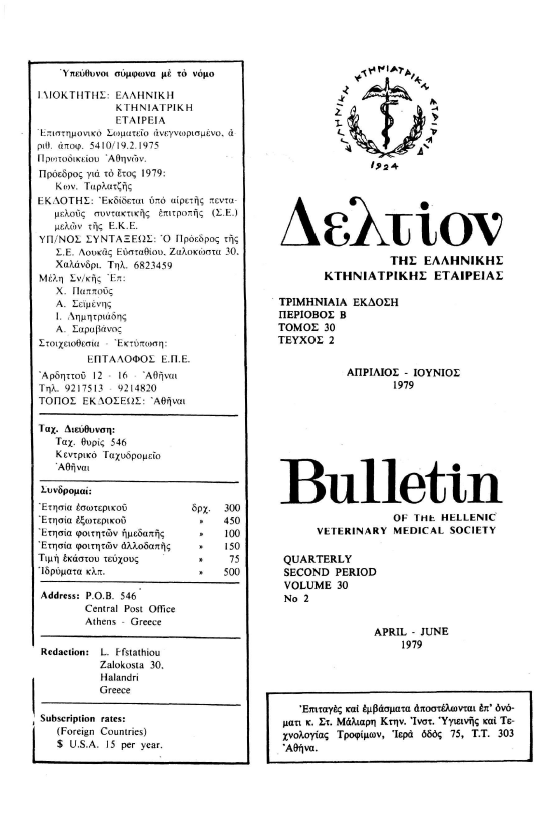Detection of foot-and-mouth disease virus (FMDV) in cattle after experimental infection
Abstract
Fifteen cattle were used for Foot-and Mouth Disease Virus (FMDV) adaption as well as for safety and potency test of vaccines. Three animals were infected with FMDV strain A Greece 1977. One of them showed generalized lesions and the virus were isolated from its blood on 2nd and 3rd day p.i. The other two animals were slaughered 34 days p.i. and the virus was isolated in both cases from salivary glands. Three other animals were vaccinated with bivalent vaccine (FMDV strain A Greece 1977 and Greece 1972) and challenged 21 days after vaccination. Four of them (with neutralizing antibodies titre between 0.95-1.70) were challenged with strain Ο Greece 1972. One of them was pregnant and it bore normally a calf two days after the challenge. The pregnant animal and another one showed generalized lesions. The Virus was isolated on the 1st and 2nd day from the blood of these two animals, which showed generalized lesions, as well as from the newborn calf on the 4th and 5th day after the challenge of its mother. Five other animals (with neutralizing antibodies titre between 1.0-2.40), which were infected with the strain A Greece 1977, showed generalized lesions. Nineteen day after the first infection these five animals were challenged again with the same strain and they were si ought er ed in 6-21 days after the last challenge. The virus was isolated in two animals from the salivary glands, in two other from pharyngeal mucosa and in one case the virus was not isolated. The reisolation of the virus was done in IBRS -2 cells and the reisolated virus was found using the CFT in all cases homologous to the original one.
Article Details
- How to Cite
-
ΔΗΜΗΤΡΙΑΔΗΣ Ι. Α., Τελώνη Θ., & Μώρου Α. (2019). Detection of foot-and-mouth disease virus (FMDV) in cattle after experimental infection. Journal of the Hellenic Veterinary Medical Society, 34(1), 3–13. https://doi.org/10.12681/jhvms.21568
- Issue
- Vol. 34 No. 1 (1983)
- Section
- Articles

This work is licensed under a Creative Commons Attribution-NonCommercial 4.0 International License.
Authors who publish with this journal agree to the following terms:
· Authors retain copyright and grant the journal right of first publication with the work simultaneously licensed under a Creative Commons Attribution Non-Commercial License that allows others to share the work with an acknowledgement of the work's authorship and initial publication in this journal.
· Authors are able to enter into separate, additional contractual arrangements for the non-exclusive distribution of the journal's published version of the work (e.g. post it to an institutional repository or publish it in a book), with an acknowledgement of its initial publication in this journal.
· Authors are permitted and encouraged to post their work online (preferably in institutional repositories or on their website) prior to and during the submission process, as it can lead to productive exchanges, as well as earlier and greater citation of published work.






